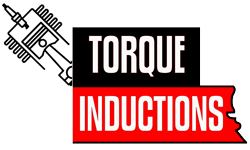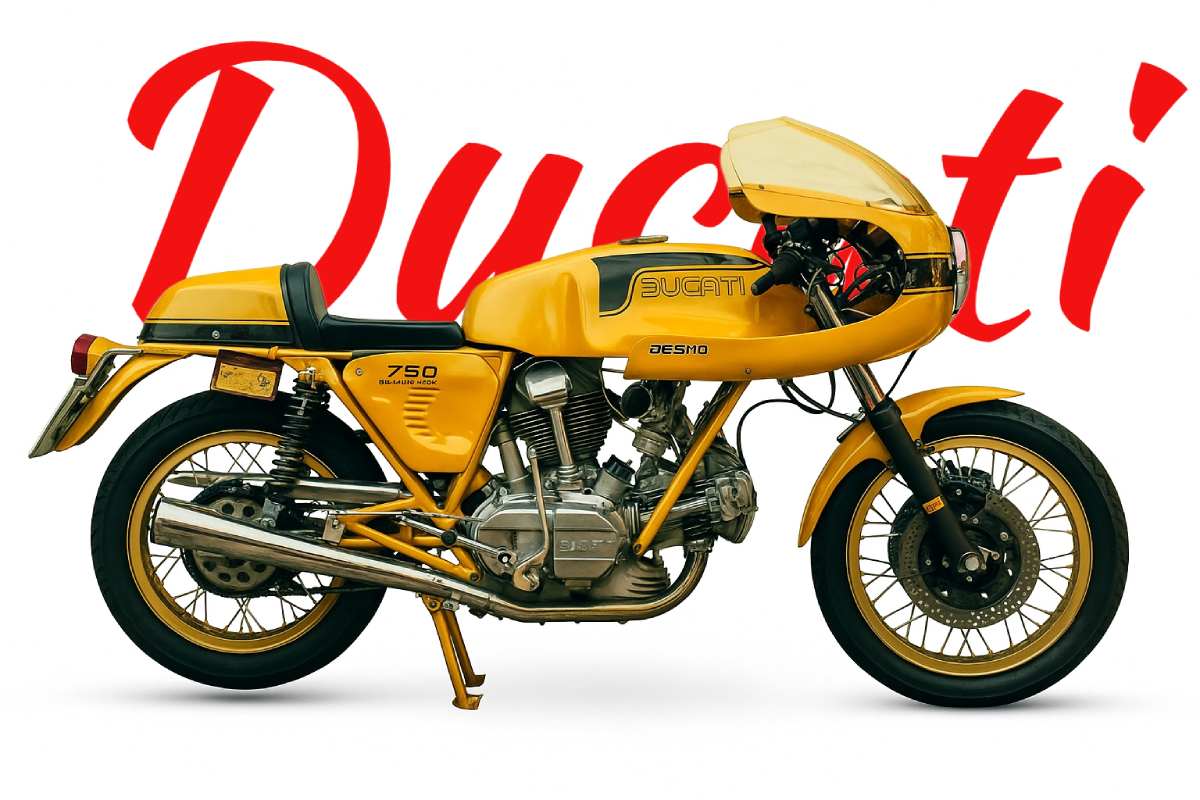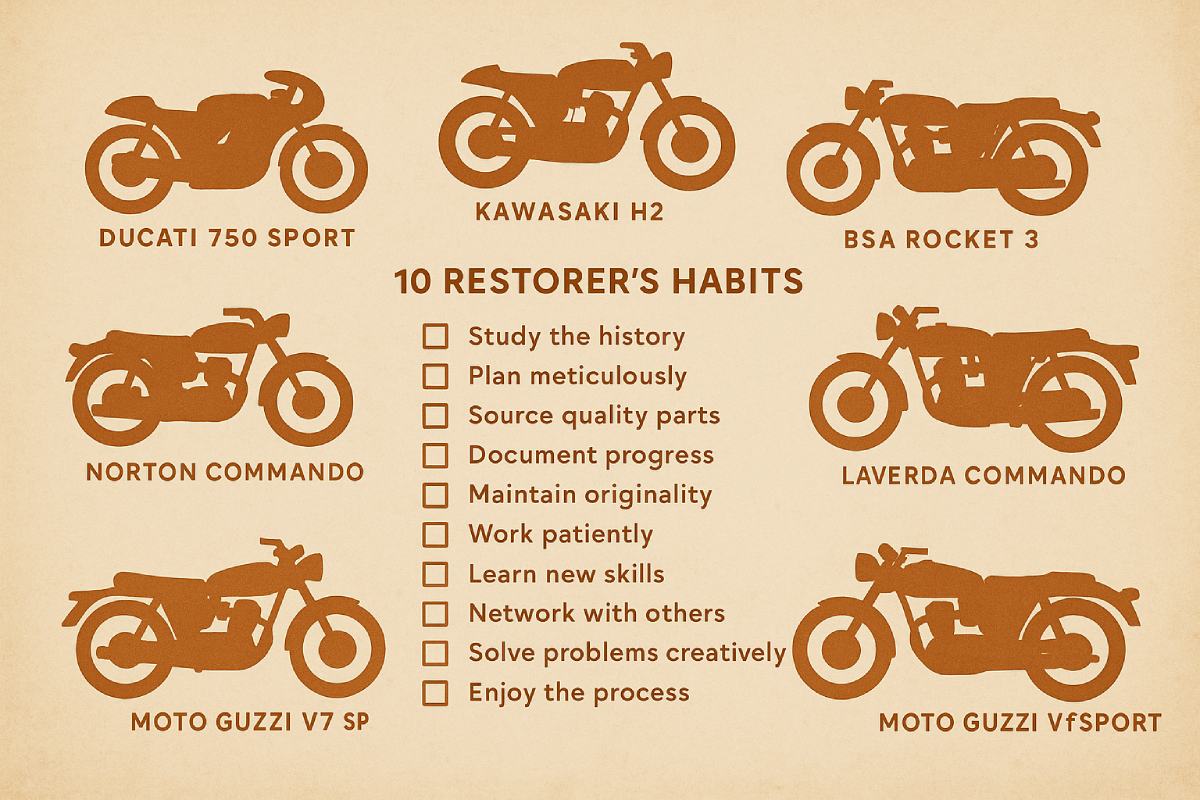- Posted on
- • Classic
Which Rare Vintage Motorcycles Are Worth Restoring in 2025?
- Author
-
-

- User
- Torque
- Posts by this author
- Posts by this author
-

Which Rare Vintage Motorcycles Are Worth Restoring Today?
The Smell of Old Oil and a Flickering Bulb
The smell of old oil on my fingertips, the garage bulb flickering like a bad horror movie, and there it is: a 1975 Ducati 750 Sport leaning against the wall like a drunk friend who swears he’s “fine.” One kick and the neighborhood dogs start howling. That’s when I knew I had to write this—about which rare vintage motorcycles are actually worth the late-night knuckle-bloodying, wallet-thinning ritual we call restoring.
Reality Check, or How I Nearly Bought a Lawn Ornament
Headlines love to scream, “Old bike found in barn now worth six figures!” Sure, and I once found twenty bucks in a winter coat. The messier truth: most barn bikes need every seal, wire, and prayer replaced. Still, a handful of machines punch so far above their weight in joy-per-dollar that they justify the tetanus shots. I learned this after dragging home a seized Honda CBX—six cylinders of beautiful regret—only to discover parts cost more than my first car. Lesson: rarity alone isn’t enough. You want a bike that people still daydream about in traffic jams.
Practical Gems—Little Habits I Stole From Wiser Fools
1. Start With the Soundtrack
I once test-rode a 1969 BSA Rocket 3 that backfired like a cap gun convention. Couldn’t stop grinning. If the exhaust note doesn’t make you laugh out loud, walk away. The rare vintage motorcycle you’re restoring should sing to you every single morning.
2. Smell the Tank, Not the Hype
Pop the fuel cap. If it reeks like varnish and despair, sniff deeper—literally. A faint trace of good old benzene means the tank’s probably solid. That’s what happened with my 1972 Kawasaki H2; the paint was trash, but the inside smelled like 1970s optimism, so I knew steel was sound.
3. Parts Tetris at 2 a.m.
Before you buy, open three browser tabs: eBay, a marque-specific forum, and a parts supplier in Bulgaria who only answers emails on Tuesdays. If you can’t locate brake shoes and clutch plates in under ten minutes, the bike isn’t “rare,” it’s orphaned. I learned this the hard way with a Laverda Jota that required me to barter a rare carb diaphragm for a favor my brother-in-law still hasn’t let me forget.
4. Coffee-Shop Litmus Test
Roll a photo of the bike across the table to a non-rider friend. If they say “cool” without looking up from their latte, skip it. When I showed my buddy Mia a 1974 Ducati 750 GT, she spilled her espresso and whispered, “That’s the color of burnt honey.” Sold. The bike later paid for half its restoration by starring in a local coffee roaster’s ad. True story.
5. The Three-Bus Rule
If you can haul the engine on public transit without security tackling you, the project stays manageable. My SR500 fit in a wheeled duffel; the XS Eleven motor required a rented van and a friendship tax I’m still paying.
6. Rust Never Sleeps, but Patina Naps
Surface rust on chrome? Fine. Rust flaking off frame rails? Run. I almost bought a 1971 Norton Commando that looked Instagram-ready until I poked the downtube with a screwdriver and daylight showed through. That’s when I learned to carry a magnet wrapped in a microfiber cloth—like a tiny, nerdy Sherlock Holmes.
7. Paper Trail or Paperweight
A title that’s been folded more times than a road map from 1983 is still better than none. I once spent six months coaxing a DMV clerk to accept a handwritten bill of sale on a napkin. Never again. If the rare vintage motorcycle lacks papers, budget an extra season of your life.

8. The One-Year Rule
If you can’t picture yourself finishing the bike in one year of stolen weekends, shrink the dream. I broke this rule with a 1958 Ariel Cyclone, and it became a very expensive shelf for spray-paint cans.
9. Ride It Ugly First
Bolt the tank back on, skip the polish, and ride around the block with the exhaust still blue from heat. That fifteen-minute shakedown will tell you more than any forum thread. My Moto Guzzi V7 Sport coughed, spat, then cleared its throat and pulled like a caffeinated freight train—motivation to finish the paint later.
10. Sell the Spare, Fund the Finish
Every basket-case comes with extra carbs, bent handlebars, and a box labeled “mystery electrical.” Sell the surplus on Friday night; by Monday you’ll have a new gasket set and, somehow, three new friends who swear they’ll “help” (they won’t, but they’ll bring beer).
SEO Layer—The Subtle Signposts
I’m not here to game the algorithm, but if you googled “rare vintage motorcycles worth restoring,” you probably want names. So let’s whisper them while the kettle boils: Ducati 750 Sport, Kawasaki H2 Mach IV, BSA Rocket 3, Norton Commando Fastback, Laverda Jota, Honda CBX, Moto Guzzi V7 Sport. There—sprinkled like chili flakes, not dumped like ketchup.
Send-off—Back to the Flickering Bulb
I’m still in the garage, the Ducati’s headlight now glowing steady instead of strobing. Outside, the city buses have stopped running and the coffee’s gone cold. But the bike idles with that lumpy, syncopated heartbeat you only get from old Italian twins. Tomorrow I’ll probably drip coolant on my shoes and curse the clip-ons, but tonight it feels like the machine and I made a pact: I’ll keep bringing it back to life, and it’ll keep bringing me back to myself.
So if you find one of these rare vintage motorcycles half-buried under a tarp and regret, kick the tire, sniff the tank, and ask yourself if you’re ready for beautiful, greasy insomnia—because that, my friend, is the real horsepower.
1975 Ducati 750 Sport Specifications, Performance, and Awards
| Category | Details |
|---|---|
| Engine | 748cc, air-cooled, four-stroke, 90-degree L-twin, SOHC, 2 valves per cylinder |
| Bore x Stroke | 80 mm x 74.4 mm |
| Compression Ratio | 9:1 |
| Carburetors | 32 mm Dell'Orto PHF, filterless with wire mesh over bellmouth |
| Power Output | 62 hp @ 8,200 rpm |
| Torque | Not widely documented; estimated ~50 Nm @ ~6,500 rpm |
| Transmission | 5-speed manual, chain drive, right-side shift |
| Frame | Tubular steel trellis |
| Suspension (Front) | 38 mm Marzocchi telescopic fork |
| Suspension (Rear) | Dual side-mounted Marzocchi shock absorbers |
| Brakes (Front) | Single 280 mm disc, Lockheed caliper (optional twin disc setup) |
| Brakes (Rear) | 200 mm Grimeca drum |
| Wheels | Wire-spoke; 19-inch front, 18-inch rear |
| Tires | Dunlop TT100 or similar |
| Weight (Dry) | 182 kg (401 lbs) |
| Fuel Capacity | ~17 liters (4.5 US gallons) |
| Top Speed | ~210 km/h (130 mph) |
| 0-60 mph | ~5.5 seconds (estimated, period tests) |
| Quarter Mile | ~13.5 seconds @ ~100 mph (estimated, period tests) |
| Awards & Achievements | - No specific awards for the 1975 model, but the 750 Sport lineage is tied to the 1972 Imola 200 victory by Paul Smart, elevating Ducati's superbike status. - Regarded as a collector's item due to its rarity and historical significance. - The 750 Sport's design influenced future Ducati models, cementing its legacy in motorcycle history. |
| Notable Features | - Clip-on handlebars, rear-set footpegs, optional half fairing. - Yellow tank and side panels, Conti exhaust pipes. - Designed as a higher-performance version of the 750 GT, popular among privateer racers in Europe. |
| Production Notes | - Extremely rare, with limited production (estimated ~50 units in 1972-73). - Positioned between the consumer-friendly 750 GT and race-focused 750 Super Sport. |
Sources:
Information compiled from various web sources, including motorcyclespecs.co.za, autoevolution.com, and motorcycleclassics.com.
Notes:
- The 1975 Ducati 750 Sport shared many components with the 750 GT but featured performance enhancements like higher compression pistons and larger carburetors.
- Performance figures (e.g., 0-60 mph, quarter-mile) are estimates based on period tests and may vary.
- The 750 Sport’s racing heritage, stemming from the 1972 Imola 200 win, significantly boosted Ducati’s reputation as a superbike manufacturer.
